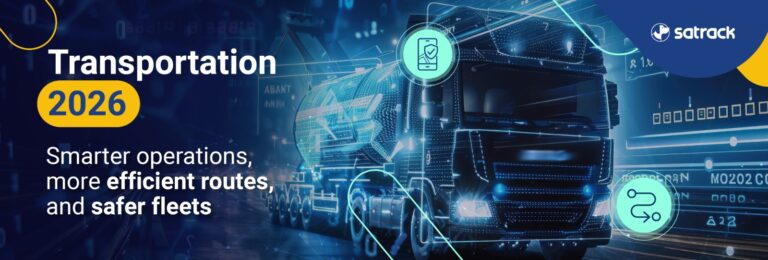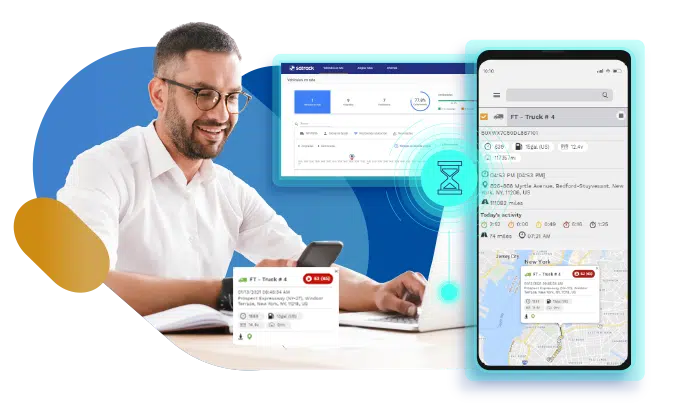
For construction equipment owners, the long-standing issue of managing machinery and ensuring its productivity has always been a difficult task; it often feels like you’re stuck in a never-ending loop and must constantly be present to ensure your operations are running smoothly. However, with the advances in technology that have occurred over the years such as GPS tracking technology, this all can now change. By leveraging GPS tracking capabilities for construction equipment, you can gain an unprecedented level of visibility into the performance of your business—driving down costs while ensuring efficiency and safety. In this blog post we will discuss why GPS tracking is revolutionary for construction companies and what benefits you can reap from implementing such technologies into your business operations.
GPS tracking technology has revolutionized the way construction companies operate. The ability to track construction equipment using GPS has proven to be a game-changer, as it helps to increase productivity and efficiency. With these systems, companies can monitor the location and movement of their construction equipment in real time and even remotely control some machines. This technology has greatly reduced theft and misuse of these expensive machines. Moreover, it has helped in improving job site safety by monitoring the work of operators and alerting construction managers on any safety violations in real time. In conclusion, the impact of GPS tracking technology in the construction industry cannot be overemphasized, as it has become an essential tool in managing construction projects.
Construction companies are constantly looking for ways to improve efficiency and safety. One of the ways they are achieving this is through GPS tracking for construction equipment. GPS technology offers many advantages for construction equipment, including real-time location tracking, accurate data on equipment usage, and theft prevention. By utilizing GPS tracking, construction companies can monitor their assets, track maintenance schedules, and ensure that their equipment is being used effectively. This technology also allows for better communication and coordination among different departments, which can lead to more streamlined operations and increased productivity. Overall, GPS tracking for construction equipment is a valuable tool that can benefit both companies and their employees.
In today’s fast-paced world, operational efficiency is key to staying ahead of the competition. One way to improve efficiency is by integrating GPS tracking systems for construction equipment. These devices not only allow for real-time monitoring but also provide valuable insights for managers to streamline operations and reduce downtime. With GPS tracking, managers can track the location of all their equipment and monitor usage to prevent theft or misuse. Additionally, this technology can enable efficient dispatching of trucks and equipment, ultimately saving time and reducing fuel costs. Overall, implementing GPS tracking systems is a smart investment that can help boost operational efficiency and save construction companies both time and money.
When it comes to construction sites, safety is of utmost importance for workers and equipment alike. One effective way to increase safety is through GPS tracking for construction equipment. With this technology in place, site managers can keep tabs on where each piece of machinery is at all times, making sure they stay within designated work zones and aren’t put in dangerous situations. But GPS tracking also plays a crucial role in preventing theft. Construction equipment is a prime target for thieves, but with GPS tracking, stolen equipment can quickly be located and recovered. By implementing this technology, construction sites can not only enhance their safety measures, but also protect their valuable assets.
Optimizing maintenance is a vital aspect of every business that wants to remain productive while saving money. With the right maintenance approach, you can prevent equipment breakdown, minimize downtime and reduce unexpected repair costs. Inefficient maintenance can be a company’s biggest overhead expense, so it makes sense to make it a top priority. When you optimize maintenance, you can extend the life of your equipment, improve operational efficiency and boost the bottom line. Whether it’s scheduling preventative maintenance or upgrading to smarter technology, there are numerous ways to optimize maintenance without breaking the bank.
Operating costs can take a significant chunk out of a company’s profits. Therefore, it’s essential to find ways to reduce those expenses without sacrificing quality. One way to accomplish this is by increasing efficiency. By streamlining processes and eliminating unnecessary steps, companies can significantly reduce their operating costs. Additionally, implementing better preventive maintenance practices can avoid costly and unexpected equipment failures, which can lead to expensive downtime. Finally, idle control can be an effective way to cut costs by reducing fuel consumption and wear and tear on equipment. By incorporating these methods, companies can lower their expenses and remain competitive in their respective industries.
In today’s fast-paced world, ensuring that documentation and reporting processes are streamlined is an absolute must. Businesses and organizations require real-time reporting to make informed decisions, and waiting days or even hours for critical information just won’t cut it. With streamlined processes, you can access accurate data quicker and more efficiently. By storing data in the cloud, everyone involved in the process can access it easily and securely from anywhere. With precise and real-time reporting capabilities, you can take a proactive approach to decision-making and stay ahead of the game. Streamlining documentation and reporting processes isn’t just a good idea; it’s essential for success in today’s global marketplace.
Effective fleet management requires a high degree of control, visibility, and informed decision-making. Without these essential elements in place, managers risk encountering a range of challenges that can impact their business’s overall performance. To enhance fleet management, businesses are investing in technology that provides real-time information on vehicle usage, fuel consumption, and maintenance schedules. Armed with this data, managers can make informed decisions about equipment replacement, route optimization, and driver training. By embracing innovative solutions that prioritize control and visibility, the fleet management landscape is poised for significant advancements that will benefit businesses and consumers alike.
Effective asset utilization and visibility are the backbone of many successful businesses, and this is no different for companies that rely on construction equipment. One solution to this problem is GPS tracking for construction equipment. By using this technology, companies can monitor their large machinery in real-time, enabling them to make more informed decisions about the equipment’s usage and location. This tracking system can result in increased productivity, better maintenance schedules, and greater safety measures. With GPS tracking, companies can efficiently manage their assets, reducing costs and improving overall operational efficiency. The technology effectively enhances asset utilization and visibility, allowing businesses to take control of their machinery like never before.
With the advancement of technology, GPS tracking has become an integral part of construction equipment operations. The installation of GPS devices is the first step in implementing an effective tracking system. However, simply installing the devices is not enough. Proper training is necessary to ensure that operators know how to use the system and get the most out of it. Programming of alerts and reports is also a crucial step. This ensures that the system is customized to the specific needs of the construction company. By taking these key steps, companies can improve their operational efficiency, reduce costs and enhance safety measures on construction sites.

If you’re looking for a reliable GPS tracking solutions provider, Satrack is the one for you. Satrack offers the best service and customer support, making sure that you’re well taken care of every step of the way. The accuracy of their data is unparalleled, so you can trust that you’re getting the most precise information possible. And what’s more, Satrack provides all of these benefits at a highly affordable price. With their combination of superior service, reliable data, and affordability, it’s no wonder that Satrack is a top choice for businesses of all kinds.
GPS tracking technology has the potential to revolutionize the construction industry. By improving operational efficiency, increasing safety, optimizing maintenance, enhancing security and fleet management, reducing operating costs and more, GPS tracking can be highly beneficial in managing construction equipment operations. However, implementation of such advanced technology does come with certain challenges. To ensure a smooth and successful GPS tracking system implementation process for construction equipment operations it is important to follow a few key steps and to opt for a reliable Satrack GPS Tracking Solutions Provider. Satrack’s knowledgeable team is experienced in providing custom-made solutions based on industry needs ensuring high quality assets that will help streamline processes and maximize productivity with minimal effort integrating priority needs from its clients world-wide. So if you’re looking to implement an effective GPS tracking system in your construction equipment operations but don’t know where to start – seek skilled expertise. Allow us at Satrack to deliver results through our integrated solutions tailored just for you, so you can get back to doing what matters most – exceeding project expectations! Do you need GPS tracking? Let us help you!
A Geo-fence is a virtual boundary or perimeter for a real-world geographic area. In the context of a GPS tracker for construction equipment, it’s a feature that allows you to establish designated areas for your equipment. When your equipment enters or leaves these predefined zones, the tracker triggers an alert. This is especially important for safety and efficiency, allowing you to more closely monitor the movement of your assets and ensure they operate within their expected locations. This function is crucial for preventing unauthorized use or theft of your valuable assets.
The cost of a GPS tracker for construction equipment can vary depending on the specific model and features you choose. Generally, the price range for the device itself typically falls between $56.00 and $99.90. In addition to the device, there’s also a monthly plan, which ranges from $12.00 to $17.00. This plan includes access to the tracking service and all the additional features it offers. It’s important to take both costs into account when budgeting for a GPS tracker for construction equipment.
Our construction equipment GPS tracker operates using the coverage of Verizon, AT&T, and T-Mobile networks in the United States.
Our GPS device can be implemented on a wide variety of equipment, including heavy machinery, trailers, garbage containers, trucks, and vans.
